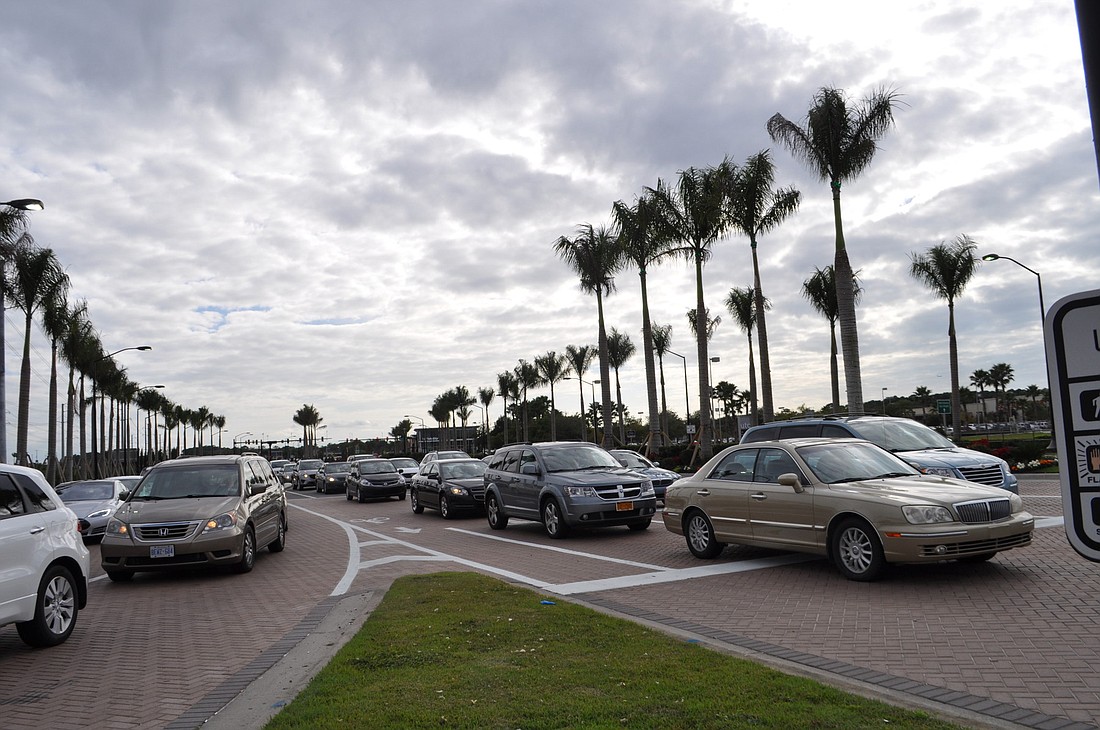- May 4, 2024
-
-
Loading

Loading

UNIVERSITY PARKWAY — In 2015, Benderson Development, co-owner of The Mall at University Town Center, hopes for approvals on some big time expansion.
And with that request comes a requirement to offset traffic impacts to the area’s already congested road network.
Benderson’s solution, as required in Sarasota County development approvals, is the establishment of a Transportation Management Association (TMA).
Todd Mathes, Benderson’s director of development, hopes that by using incentives to encourage mall employees to carpool, take public transit or ride bicycles to work, the TMA can modify the driving behavior of at least 16% of those employees.
Incentives could include gift cards, paying for transit passes or gym memberships, as well as a program to make sure employees can get home quickly in case of emergencies.
Why is the TMA needed?
It’s triggered by Benderson’s request to add 600,000 square feet of retail and 100,000 square feet of office space by the mall. Sarasota commissioners will consider the proposal Jan. 27.
The Southwest Florida Regional Planning Council OK’d the expansion in November.
In total, the mall and Benderson’s nearby University Town Center shopping centers have more than 4,000 employees.
If 16% of those employees modify their behavior, that’s about 640 drivers daily. A draft management plan by Kimley-Horn and Associates states that persuading employees to use alternative transit modes once or twice a week can equal a 20% reduction in afternoon peak-hour traffic volumes.
This month, Benderson will send out a detailed survey to employees in The Mall at UTC and its neighboring UTC projects to help it figure out employee hours/shift changes, where employees are traveling from and other details that will help the TMA function as best as possible.
The TMA will use those results to determine: what modes of transportation people are already taking; obstacles; and what incentives would get them out of their cars.
Then it will begin implementing strategies and educating employees about their options.
“Truly, some of these transportation demand management strategies, while they aren’t unique, sometimes they aren’t known,” said Christopher Hatton, senior vice president of Kimley-Horn and Associates. “The education is really important.”
Although carpooling, off-site parking, shuttles and public transit aren’t new ideas, they aren’t common in this market, Hatton said. The TMA’s role is to get people to use them.
“The more people do that, the more momentum will build,” he said, adding Benderson will monitor the effectiveness of strategies and modify them as needed. “It’s a continuously evolving process and that’s really the critical part of what the TMA does.”
Mathes says Benderson’s original mall site proposal included the additional space, in terms of projected traffic impacts. He said that space will house many national and local businesses who wanted space inside the mall, but couldn’t get it.
“There’s nothing but demand,” he says. “When you look at the list who wanted to be here — it’s long. There’s definitely a demand, which is great.”
If approved, Benderson will begin more detailed site plans for the project, which likely will build out over several years.
If not, Mathes says the TMA will still move forward.
“I guess the simple answer is that while we wouldn’t have a regulatory obligation to pursue the TMA, nothing changes, we’ll still move forward because it will be an amenity to the project,” he said.
Influencing traffic
Successful Transportation Demand Management plans have the following characteristics:
• Targeted segments
• A range of strategies provides options as diverse as the people targeted to use the strategies.
• Support services (to overcome perceived barriers)
• Monitoring and flexibility
Source: Draft Framework for the University Town Center Transportation Demand Management Plan, Kimley-Horn and Associates